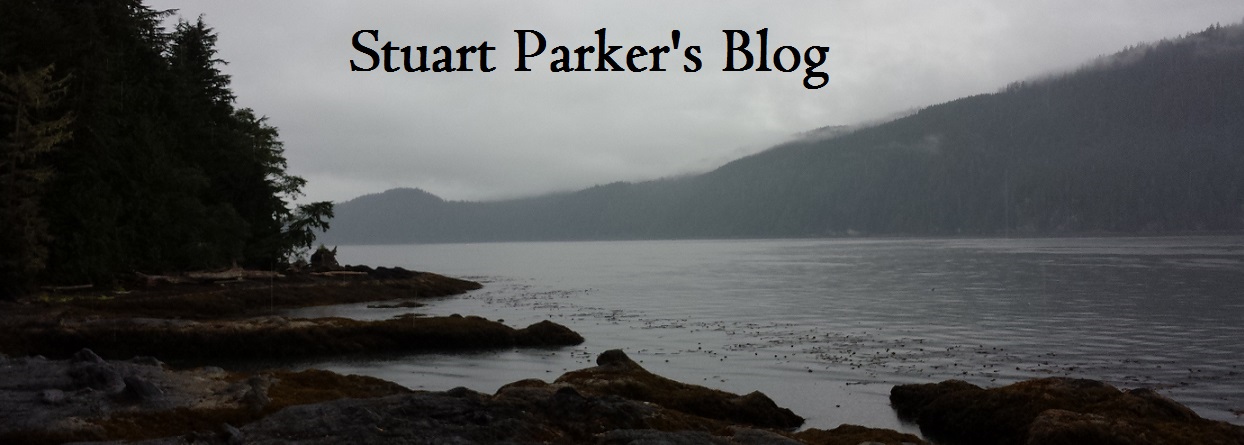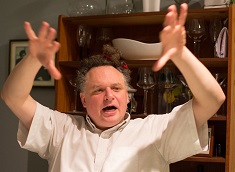It finally happened. Roe vs. Wade, one of the greatest pieces of liberal judicial activism of the twentieth century was struck down. For me, my comrades and millions of American women of childbearing age this is a tragic moment, another huge piece of the Cold War social democratic welfare state’s social contract sheared-off.
But this defeat was especially searing because, unlike P3s, a US-led global order, free trade, austerity and privatization, this was not a wind-assisted victory of an elite consensus. Because that is how people of the political left see those other losses: the establishment endorsed these things; they heavily bankrolled or Astro-turfed smaller or non-existent social movement groups to echo that consensus; they got pretty much all mainstream political parties, major corporations and the liberal media to present these things as not just beneficial but inevitable. “There is no alternative,” Margaret Thatcher said.
This win is different because the establishment was on our side and was, for the most part, against the movement that just won. While anti-abortion activists enjoy the support of some major corporations in America, they are not the majority; and while they enjoy the support of one of America’s major political parties, that support is not unanimous across jurisdictions. America’s extreme Northeast and Northwest still have pro-choice Republican parties. And it was not until the early 1990s that there was even one major mainstream anti-abortion media outfit, FoxNews. And it was not until the early 2000s that TV and movie dramas touching abortion, even on Fox, ultimately came down on the side of choice.
Finally, we must remember that, even in the religious sphere, most churches were not anti-abortion when Roe v. Wade was handed-down. The Roman Catholic Church officially and vehemently opposed abortion and so, partly to distinguish themselves from the largest single denomination (Catholics), most Protestants, including most Evangelicals used abortion as a means of distinguishing themselves from Catholics. Indeed, nothing short of a complete remaking of the American religious marketplace over the next four decades was necessary to create the near-consensus among regular churchgoers in the US that the state must regulate abortion. “Mainline” Protestant churches went from being the second-largest group of American churchgoers to a tiny portion comprising no more than a tenth; evangelicals pulled away from mainline denominations and joined with the rapidly-growing fundamentalist and Pentecostal movements; historically black churches soured on abortion; and churchgoing became a rural, rather than universal American pastime.
A grassroots movement, and one that does not enjoy the support of a majority of Americans, even today, conducted a half-century struggle and beat us.
Any person of any level of political seriousness must study this victory if they have any interest in beating the establishment at anything. Whether one agrees with the anti-abortion movement or vehemently opposes it, any person truly interested in a grassroots struggle against money and power should be studying this victory with a fine-toothed comb for years to come.
So, I thought I would offer a little bit of what I have learned, as an outsider, from my experiences of organizing with anti-abortion activists and the insights I gleaned, that other social movements would do well to follow.
In 1996, mathematician and political organizer Julian West and I decided to create a coalition of political parties and civil society organizations that would champion a provincial referendum on proportional representation. Early adopters who pulled in their organizations, and built our group, the Electoral Change Coalition (ECCO), so-named by Canadian Taxpayers’ Federation’s Troy Lanigan from the ground up. They included Troy, the BC Reform Party’s David Secord, the BC Marxist-Leninist Party’s Charles Boylan and the BC Family Coalition Party’s Kathleen Toth, among many others. As the organization evolved and took its various twists and turns, I worked with a number of anti-abortion folks on voting reform work, like Kathleen’s husband Mark, FCP candidate John O’Flynn, Christian Heritage Party leader Heather Stillwell, along with BC Reform Party pro-life insurgents Bev Welsh, backer of Wilf Hanni’s successful takeover of the party by the Christian Right, Wilf, himself and, finally, Chris Delany, the Bill Vander Zalm surrogate who merged Reform into the BC Unity Party.
In fact, my last speech as leader of the BC Green Party was as part of a panel on electoral reform the month after my defeat as party leader. It ended with a hug of appreciation for my work on the file from the Zalm himself.
ECCO’s sister, and later, successor organization was Fair Voting BC, founded by Nick Loenen, the Zalm’s seat-mate representing Richmond in the legislature 1986-91. Nick’s book on PR, the original bible of BC’s voting reform movement, A Case for Proportional Representation, was explicit in arguing that PR could be a vital tool whereby the anti-abortion advocates could wield real political power in the BC legislature and was crucial in piquing so much interest in PR on the Christian Right in the 1990s.
Most participants in our coalition were eager to try being in such a broad, disparate and diverse group but lacked cultural experience of this kind of work. And so it fell to those most experienced with this sort of thing to take the lead, and so our organization in many ways was imprinted with the style of coalition politics practiced by the anti-abortion movement.
Learning how to formulate complex communications, strategies and tactics with allies who disagree with most of one’s political views and find a significant portion of said views not just wrong but offensive is quite tricky. But this was a movement of Catholics who had persuaded members of evangelical churches that believed the Pope was the literal Antichrist to lock themselves to abortion clinic doors together.
A fundamental tenet of our meetings was that we needed to agree on as few things as possible; the more things we added to our list of points of agreement, the more likely the coalition was to fray, to collapse into arguments. Nearly every annual general meeting featured Canadians for Direct Democracy, a junior member of our coalition, attempting to get us to expand our mandate to include support for easier-to-use initiative legislation, binding referenda and other democratic reforms. Every time, CDD was voted down.
Because we learned from our Christian comrades that the strength of a coalition comes from its size and breadth and that every additional demand a coalition makes is one that makes is narrower, smaller and weaker, no matter how apparently small or intuitive.
We also learned how to have political conversations in which we could share stories about highly charged, highly polarizing political experiences by changing the kind of story they were. Stories of logging road and abortion clinic blockades ceased being stories about old growth forests and the human soul; they became stories about being the kind of person who does this sort of thing, the run-ins one has had with the courts and police. Kathleen and I shared stories about what it was like to be a beleaguered party leader in a small organization full of eccentrics and fanatics.
In this way, what we agreed on stayed small but what we could talk about was as much as any group of people thrown together possibly could. I especially savour the memory of one night when we went for drinks after staging our annual general meeting. Every year, we would re-elect Troy president and, as he was a member of the Taxpayer movement, we always counter-balanced this by having Charles, the Marxist-Leninist, give his nominating speech. That year we had got into quite a personal tussle with CDD, whose representatives had shouted “the president is a dictator! The president is a dictator!”
Troy was commiserating with us afterwards and said, “It’s like they think I’m some kind of Stalinist,” to which Charles replied, “I’m a big fan of yours Troy. I’ve got your back. But I consider Joseph Stalin to be just about the greatest human being who ever lived and I’ll be damned if you’re going to say another word against him.” We all laughed very hard after that, led by the CHP’s Heather Stillwell, if memory serves.
Another big thing I learned from the anti-abortion movement is that you can turn a media blackout into a kind of internal publicity and morale boost. A generation before one could share crowd photos and selfies on social media and be seen by thousands of eyes, North America’s anti-abortion movement trudged through a worse media blackout than any I have ever faced—and I sure have faced a couple.
In Canada, the mainstream media would cover nomination contests in the Liberals and Tories where anti-abortion candidates for office would fight it out at nomination meetings or, as the 90s wore on, suddenly find their nomination bids vetoed by the party leader. But this did not extend to other demonstrations of the sheer size of the mobilized anti-abortion movement. When abortion clinics were blockaded, mainstream media would assiduously ignore the confrontation, no matter the turnout, even when those blockades led to multiple arrests.
But the most extreme moment of the blackout would occur annually on “Life Chain” day in which anti-abortion protesters would link hands and form into incredible multi-block chains of as many as five thousand human beings at a single location. I even asked Kevin Evans, then-anchor of CBC British Columbia’s six o’clock news about this and he confirmed that not covering the Life Chain was a matter of shared policy among all major broadcasters.
Imagine Extinction Rebellion going years or even decades without a single word of their bridge and road blockages hitting the mainstream media!
But what I found was that the week after the Life Chain was the week anti-abortion activists were most serene. Rather than feeling cheated by the lack of coverage, there was a sense of purity, of power that came from being so intentionally and obviously ignored. The Life Chain imbued a sense of confidence, the sense that their adversaries had run out of ideas for stopping them but the chain was lengthening anyway, that the power they wielded was growing and nobody co-owned it; it was all theirs.
And the very absence of coverage, the media’s implicit denial of the movement’s momentum served as proof of the real momentum it genuinely possessed.
A third important feature that merits rehearsal is perhaps the most surprising to outsiders: standing behind female leaders and listening to women. Kathleen had risen to prominence as the last president of the Social Credit Ladies’ Auxiliary, succeeding its long-time head, Hope Wotherspoon, who had ascended to the presidency of the whole party. Social Credit was the last of BC’s political parties to hold separate (sometimes concurrent) women’s conventions. And as any man who has tried to interrupt an assertive Mormon woman knows, the best place to build strong leadership skills for women is in single-sex spaces.
Not only did the churches from which anti-abortionists hailed contain and defend single-sex spaces and single-sex leadership positions, the province’s natural governing party had refused to abandon the separate spheres model until the late 1980s. This meant that there were female leaders trained, tested and promoted in female-only spaces who could meet any room she entered authoritatively and command that space. Phyllis Schaffly was not an outlier; she was a type within the Christian Right, a woman who had learned to control a room, unmediated by male power.
Given that the first and most powerful interfaith organizations in Anglo America, all the way back to the WCTU, were female-led, there was an additional expectation that conditioned this organizing. It was expected that single-faith gatherings were clergy-led and therefore male led; but by the same token, it was expected that interfaith groups and other coalitions would be more appropriately led by women. And women seemed logically qualified because if there is one gender cliché of which progressives and conservatives equally partake it is the idea of the woman as social bridge-builder, peacemaker and fence-mender.
The last observation I will make is that anti-abortion activists shared something that used to be more universal among climate activists like me: a never-ending sense of urgency, the sense that lives were being lost, people were dying every day they did not win.
That kind of profound urgency actually keeps activists from working themselves to the point of burnout, because of the knowledge that one needs to be able to keep struggling every day, that one cannot give up until victory has been achieved.
But that sense of desperation also breeds a cold political calculation, one that is willing, on the large scale, to ride on the backs of the corrupt and godless Donald Trump and Mitch McConnell, if that’s the only way to get to the Supreme Court. That desperation was enacted on the small scale every day, at the grassroots level.
Kathleen Toth and I didn’t just find a way to be joyful comrades because we were friendly people who love the other humans; we did so because we were desperate, so desperate as to not let some ethos of personal purity get in the way of making the deals we had to, to save the lives we understood ourselves to be trying to save.
If we really care about the issues that animate us, it behooves us to ask: (1) is our coalition broad enough, permissive enough? (2) can we build our power and momentum without needing others to recognize it? (3) do we have a pipeline that is producing powerful female leaders? and (4) if we are as desperate as we say, are we really doing all we can?


